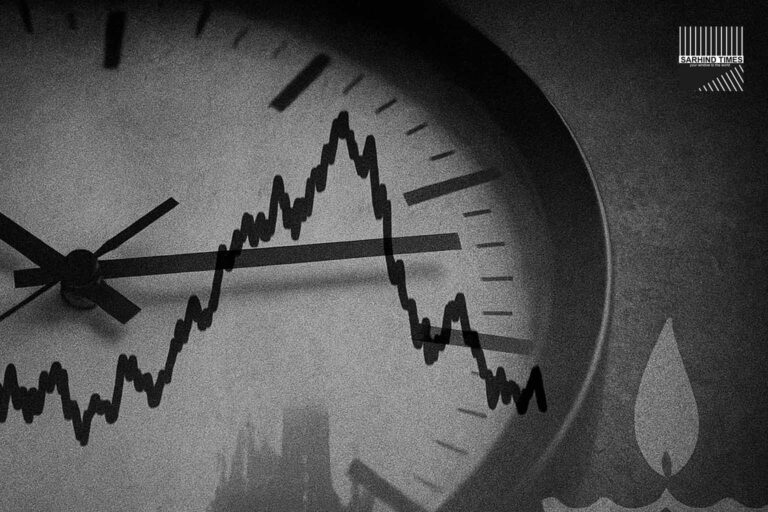New Delhi, October 17, 2025 — In a momentous first for Indian monetary history, the Reserve Bank of India’s gold holdings have crossed the $100 billion threshold, reaching $102.365 billion in the week ending October 10. This landmark is less about aggressive new accumulation and more about the surge in global bullion prices. What it reveals is a profound shift in the composition, valuation and strategic importance of gold within India’s reserve architecture.
Valuation Gains, Not Hoarders’ Frenzy
RBI data show that its gold portfolio rose by about $3.595 billion in that week, while total foreign exchange reserves declined by $2.176 billion to $697.784 billion.
That underscores that the milestone is valuation-driven: global gold prices have galloped upward in 2025, rewarding existing holdings heavily. Meanwhile, RBI’s net physical gold purchases slowed sharply: only ~4 metric tons between January and September 2025, compared with ~50 tons in the same timeframe in 2024.
In effect, the gold portfolio is being carried higher by price momentum rather than fresh acquisition. Analysts interpret this as RBI exercising restraint in accumulation when markets are frothy, focusing instead on valuation leverage.
Gold’s Share: Highest Since the 1990s
With this recalibration, gold now represents ~14.7 % of India’s total foreign exchange reserves — the highest proportion since 1996-97.
Over the past decade, that share has nearly doubled: from below 7 % to nearly 15 %.This transformation has occurred through a combination of steady accumulation, incremental repatriation, and, now, dramatic price gains.
Why Gold Matters: Role in Reserve Strategy
Gold occupies a unique space in reserve strategy. Unlike foreign currencies or sovereign bonds, it has no counterparty risk, and is a classic safe-haven hedge in times of geopolitical or systemic stress. Many central banks globally are rediscovering it as a diversification tool in an era of sanctions, de-dollarization, rising debt and FX volatility.
For India, the narrative is compelling: gold offers an insurance layer against extreme external shocks, especially when currency markets turn volatile. With recent global uncertainty—from trade wars to sanctions to supply disruptions—holding gold gives RBI an extra buffer.
The Slower Buying Stance: Intentional Caution
RBI’s cautious posture toward new purchases in 2025 (only 4 tons vs 50 tons in 2024) is reflective of prudent central-banking behavior. Buying at peak valuations is risky, so RBI seems to be letting the market do the heavy lifting while conserving dry powder.
It also signals that RBI is comfortable with current exposure: gold already has significant weight in the reserves. Further accumulation could overly crowd the portfolio, unless total reserves grow in tandem.
The Repatriation Angle: A Gradual Shift Home
Behind the scenes, RBI has also been bringing gold back to India from overseas vaults. In FY24, it repatriated ~100 metric tonnes from the Bank of England, and later ~102 tonnes in a Dhanteras move.
By end-March 2025, RBI’s total gold holdings stood at ~879.58 metric tonnes, up ~57.48 tonnes over the previous year.
Of these, more is now held domestically, reducing reliance on foreign vault custody.
Still, repatriation has been slower recently—only 1.53 tonnes were brought back in the six months ending March 2025.
That suggests RBI is balancing the benefits of domestic storage (sovereignty, security) with the logistics and costs of transporting high-value assets.
Comparative Perspective: How India Stacks Up
Global central banks have been active in accumulating gold in recent years. Some see it not just as a hedge, but as a reserve reallocation away from over-reliance on the U.S. dollar.
In that context, India’s crossing of the $100B mark puts it in an elite cohort of nations whose gold reserves command serious clout. The timing—amid global macro stress—adds symbolic and strategic weight.
Implications & Risks Ahead
- Balance Sheet Impact: The marked valuation gain enhances RBI’s balance sheet, possibly influencing its surplus transfers to the government.
- Market Sentiment & Gold Prices: India’s rising reserve gold can itself feed investor sentiment into bullion markets—especially in India, where gold is culturally and economically important.
- Portfolio Risk: The concentration risk grows if gold becomes too dominant in the portfolio. If the price reverses, the impact could be steep.
- Liquidity Trade-Offs: Gold is less liquid than government securities or foreign bonds. In a crisis needing quick cash, converting gold may incur spreads or delays.
- Currency Dynamics: The valuation gain is partially a result of foreign currency depreciation (i.e. rupee weakening). Thus, some of the sharp jump may reflect FX shifts, not just pure price movement.
- Future Buying Strategy: RBI will have to time further purchases carefully. Aggressive buying now could seem overzealous, but waiting for a dip may miss the window.
Voices from Markets & Analysts
Kavita Chacko, Research Head for India at the World Gold Council, remarked:
“The jump in the value of India’s gold holdings is more a reflection of global price momentum than fresh physical accumulation. But the effect is real—India now commands one of the more leveraged gold exposures among central banks.”
Market strategists note that geopolitical risks, sanctions, and de-dollarization debates are pushing many central banks to revisit gold’s role. India, with deep cultural affinity for the metal, is well placed to ride that wave.
Historical Echoes: The 1991 Crisis & Gold Pledging
It’s worth recalling that in 1991, India’s foreign reserves slid to dangerously low levels, forcing the government to airlift ~67 tons of gold to London to raise emergency funding.
That memory still looms in India’s strategic reserve psyche: today’s gold buffer stands as a powerful counterpoint to that dark chapter.
What Next? What to Watch
- RBI Weekly Reserve Reports: Will RBI resume more frequent purchases?
- Global Bullion Trends: Gold prices remain volatile; any sharp reversal could test the valuation cushion.
- Reserve Growth: Any sustained rise in overall reserves (via trade surplus, capital inflows) would let RBI add gold more safely without overweighting.
- Policy Signals: Monitoring RBI commentary in upcoming Monetary Policy Reviews or annual reports for changing stances on gold.
- Infrastructure & Vaulting: How RBI scales secure domestic storage, insurance, and transport protocols.
- Spillovers to Gold Demand in India: Will this boost SGB / retail gold interest, or lead to regulatory tweaks?
Concluding Thoughts
Crossing the $100 billion gold mark is not merely symbolic—it is an inflection point in the Indian reserve strategy narrative. It illustrates how a patiently built asset, when complemented by favorable pricing conditions, can evolve into a major cornerstone of macro resilience.
Yet RBI’s measured purchasing, cautious repatriation pace, and diversified reserve mix suggest that even as gold gains stature, India is not abandoning prudence. The real test lies ahead—can RBI convert this valuation momentum into long-term stability, without succumbing to overexposure?
India now stands among central banks with deeply leveraged gold stakes. The weight of expectation is high, responsibility is heavy—and the bullion bar in the vault has never looked more symbolic. #RBI #GoldReserves #ForexReserves #MonetaryPolicy #Commodities #IndiaEconomy #SafeHaven #Macro






















+ There are no comments
Add yours